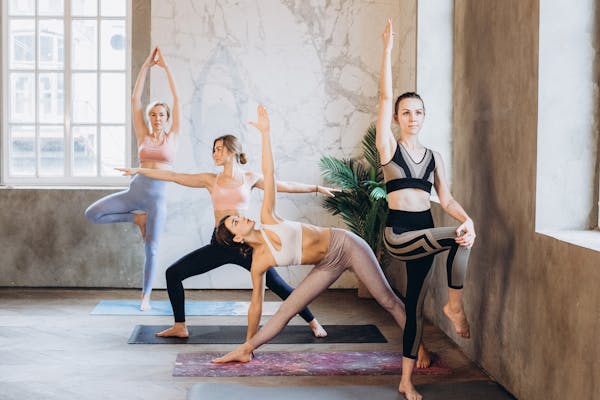Hip-Opening Yoga Poses for Flexibility and Release
Yoga, with its diverse range of poses, offers a gateway to increased flexibility and overall well-being. Among these poses, hip-opening postures hold a special place, aiding in both physical and emotional release while enhancing flexibility and mobility in the hips. Whether you're a seasoned yogi or a beginner, integrating hip-opening poses into your practice can bring profound benefits to your body and mind.
Understanding Hip-Opening Yoga Poses
Hip-opening yoga poses specifically target the hips, groin, and pelvis, areas where many people hold tension and stress. These poses involve various stretches and movements that aim to release tightness, increase range of motion, and alleviate discomfort in the hip area.
Hip-Opening Yoga Poses to Explore
Pigeon Pose (Eka Pada Rajakapotasana): Starting from a high plank position, bring one knee forward toward the same-side wrist, extending the opposite leg behind. Lower the hips, aiming for the front shin to be parallel to the top of the mat. This pose deeply stretches the outer hips and glutes.
Bound Angle Pose (Baddha Konasana): Sit on the mat, bringing the soles of the feet together and allowing knees to fall outward. Holding the feet or ankles, gently fold forward, feeling the stretch in the inner thighs and groin area.
Lizard Pose: From a high plank, step one foot outside the same-side hand, sinking into a low lunge position. Lower the forearms to the mat or onto blocks, feeling the stretch in the hip flexors and groin.
Wide-Legged Forward Fold (Prasarita Padottanasana): Stand with feet wide apart, hinge at the hips, and fold forward, bringing hands to the ground or clasping the big toes. This pose offers a deep stretch to the inner thighs and hamstrings.
Happy Baby Pose (Ananda Balasana): Lie on your back, bend knees toward the chest, grab the outer edges of the feet, and draw knees toward the armpits. This pose releases tension in the hips and lower back.
Benefits of Hip-Opening Yoga Poses
Increased Flexibility: Regular practice of these poses gradually opens and loosens the hip joints, improving flexibility and mobility.
Tension Release: Targeting areas of tension, hip-opening poses alleviate tightness in the hips and surrounding muscles, reducing discomfort.
Emotional Release: The hips are said to store emotional stress, and releasing this tension through these poses may offer emotional relief and a sense of release.
Practicing Hip-Opening Poses Safely
Mindful Breathing: Deep, conscious breathing helps relax into these poses and facilitates deeper stretches.
Gentle Approach: Avoid pushing beyond your comfort zone and embrace gradual progress in hip-opening postures.
Use of Props: Props like blocks, blankets, or bolsters can provide support and enhance the poses, especially for beginners.
Conclusion
Hip-opening yoga poses not only enhance physical flexibility but also contribute to emotional well-being by releasing stored tension. Incorporating these poses into your yoga practice, along with mindful breathing and a gentle approach, can lead to increased flexibility, reduced discomfort, and a greater sense of ease in both body and mind.
FAQs
How long should one hold hip-opening poses?
Aim for 30 seconds to a minute initially, gradually increasing hold times as comfort and flexibility improve.
Can hip-opening poses alleviate lower back pain?
Yes, these poses can help release tension in the hips and lower back, potentially reducing discomfort.
Are hip-opening poses suitable for beginners?
Yes, beginners can start with modified versions of these poses and gradually progress as flexibility increases.
How often should one practice hip-opening poses for noticeable benefits?
Practicing these poses 3-4 times a week can yield noticeable improvements in flexibility and hip mobility.
Can hip-opening yoga poses be beneficial for athletes or runners?
Yes, athletes and runners often have tight hips, and these poses can help alleviate tightness and improve range of motion.
